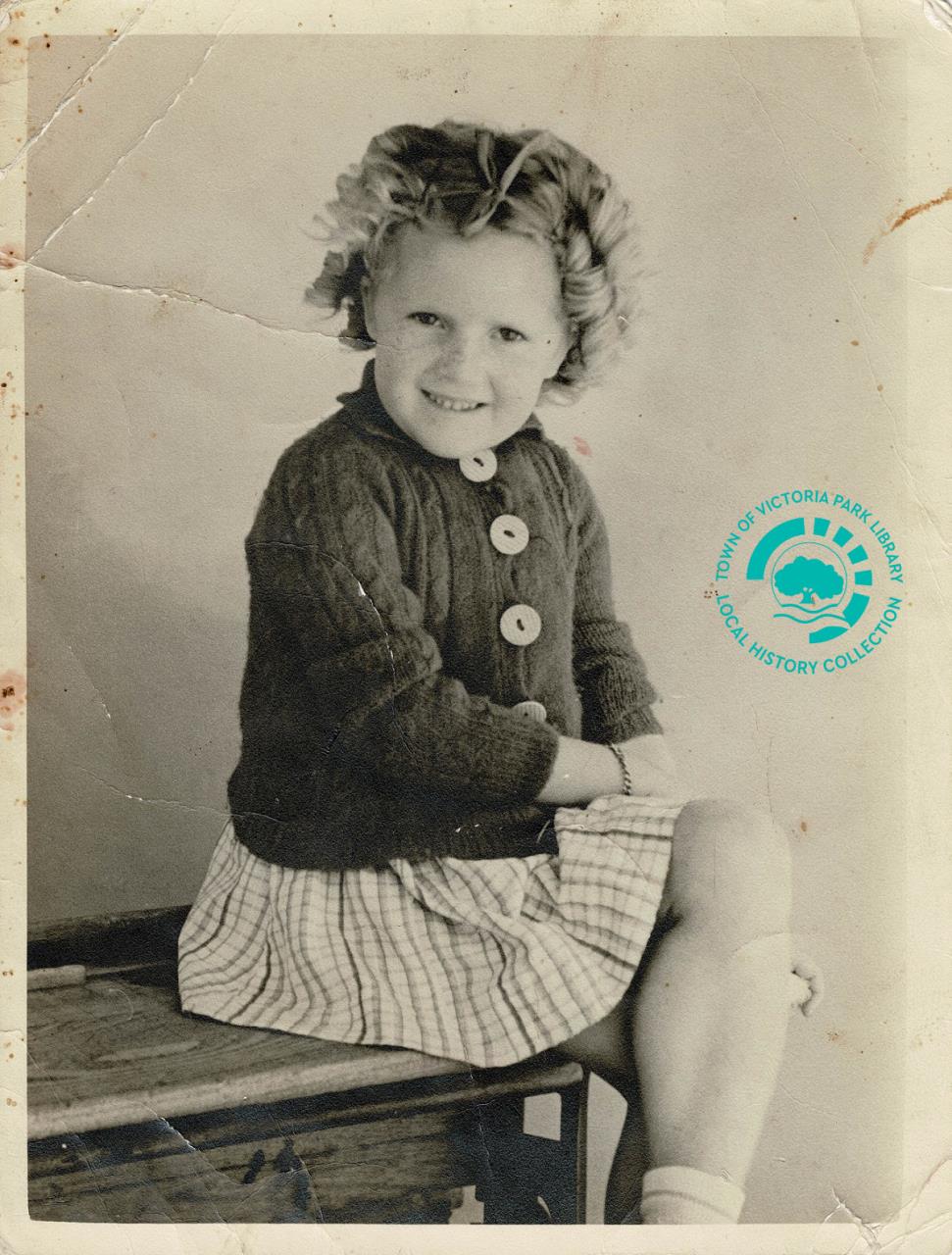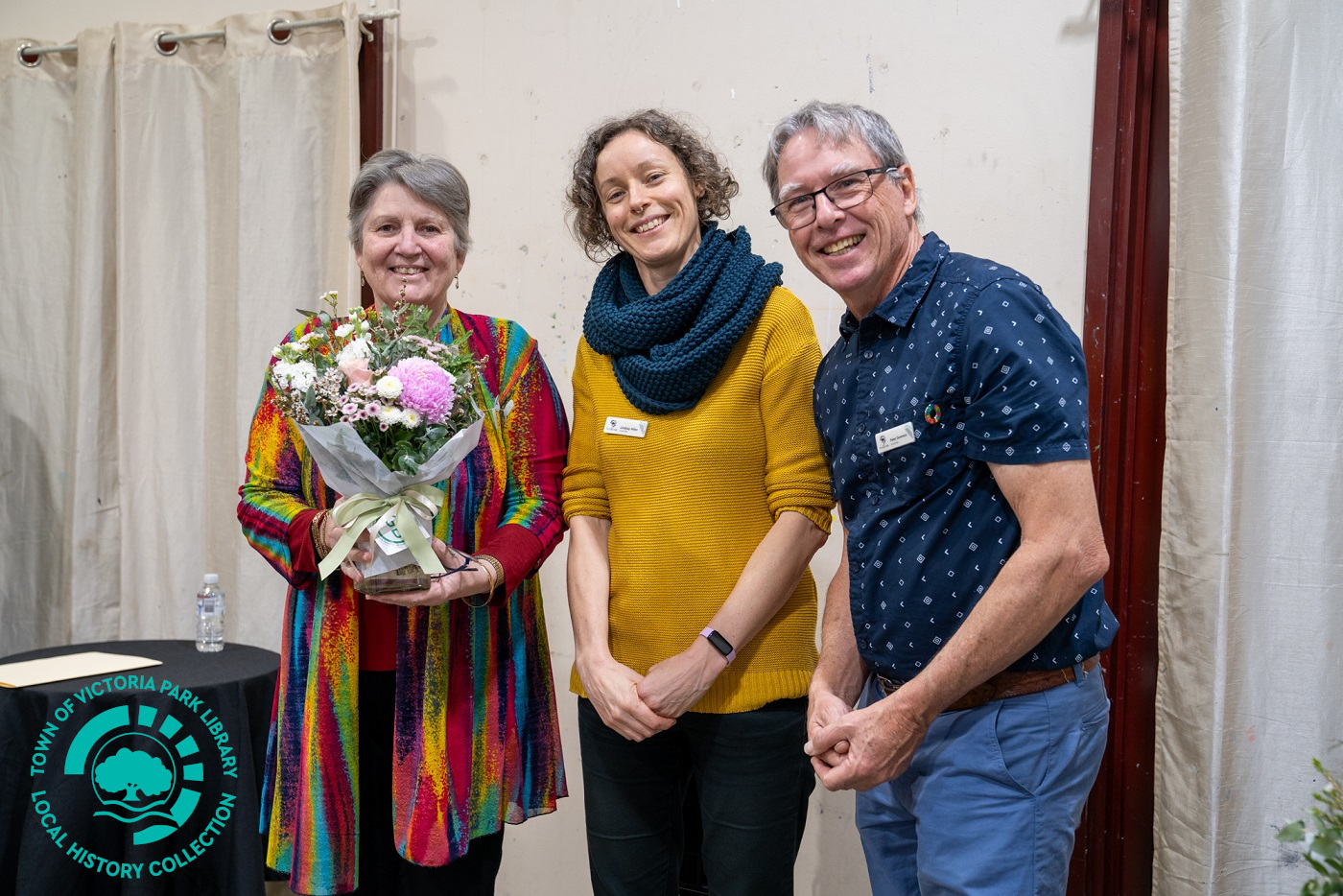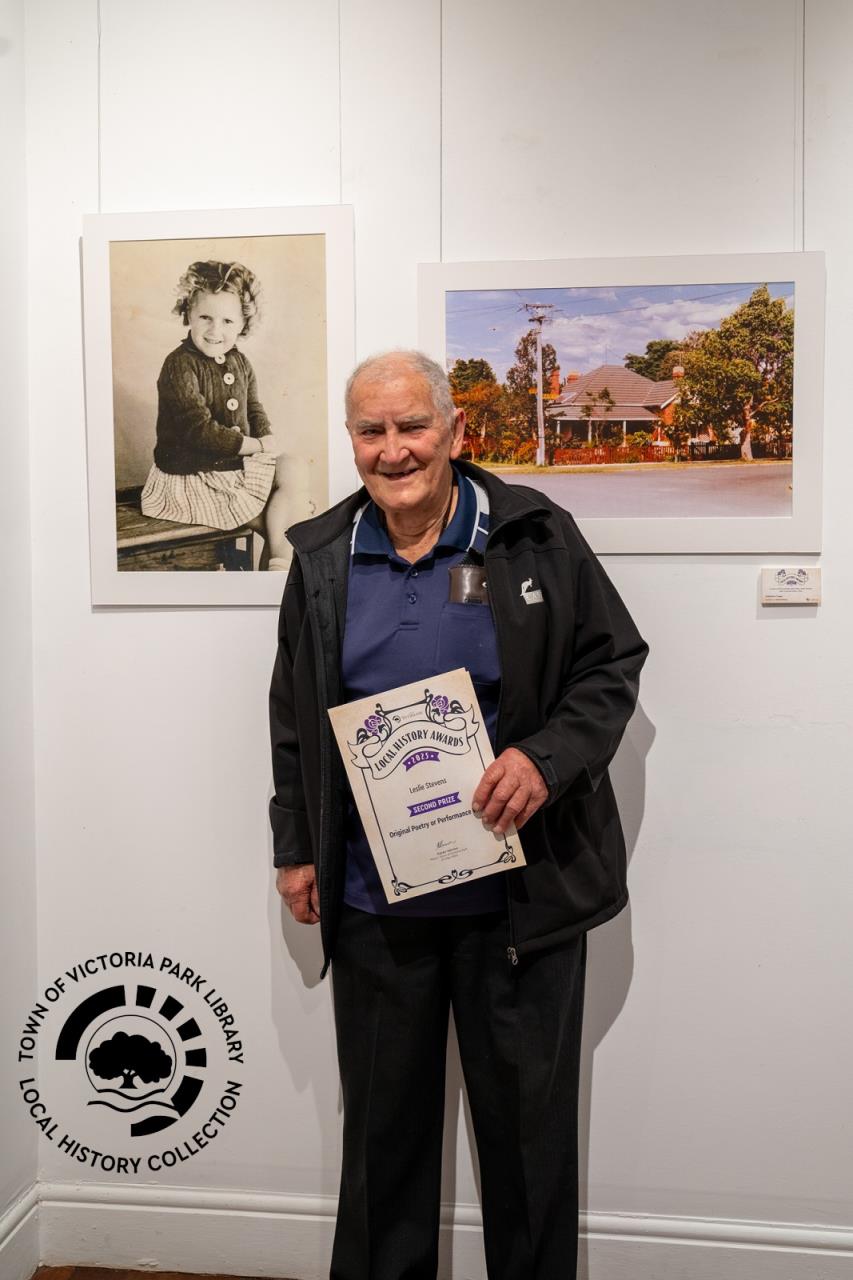Published on Tuesday, 12 August 2025 at 8:00:00 AM
Welcome to #TimeWarpTuesday and our celebration of the recent 2025 Local History Awards. Over the coming weeks we will take a look at the entries and the winners in each of the categories of the Awards. This week we feature one of the entries in the category of:
Personal Memoirs
“Bottom School Memoirs” by Margaret Lievense
“I was fortunate enough to born in one of the best places in this state of Western Australia. I am, of course, referring to Victoria Park. I was born at Christmas-time in 1934, at Nurse Newington's St Clair Hospital, in State Street. I lived on the Canning Highway throughout my childhood years, close to the Swan River where we spent our leisure time on the weekends during the summer months. In the past, I know that there have been many stories written about life here so I thought I would add another subject that I assume has not been mentioned to any significant degree previously.
“I attended the local school, which I believe is officially named the Victoria Park Primary School but was alternatively known as the Cargill Street School. In our day, we referred to it as the "Bottom" Vic Park School, there being two schools in the suburb. The other was the East Victoria Park School and was, as the name suggests, further to the east. I have very happy memories of my life at the school and thought I would share a couple of them with you.
“I began school in 1940 and, as you will be aware, the world was at war with Germany and Japan. On the western side of the school was a large area which was unused. It had been dug up and trenches had been installed in preparation for an attack, as Japan was the more feared opponent in our area. We were subject to "trench drill" almost daily. We would be sitting in class when a bell would ring and we would be timed getting to the trenches in the area allotted to our class. The staff there were very strict about being too slow. Each of us was required to wear a cotton bag, made by our mothers, which was equipped with items thought necessary in emergency cases. These, from memory, included things like a bandage pack, water bottle, barley sugar, chocolate, etc. Our bags were regularly checked out by our teachers and look out if anything was missing! I don't know why, but my barley sugar and chocolate rations were often missing and that got me into hot water.

PH00460-01 Margaret Stevens (later Lievense) in school photo circa 1940-1943.
Local History Collection, Town of Victoria Park Library Service.
“However, the exercises were carried out regularly to drill into us the necessity of being prepared - just in case. Being so far away from the actual affected areas, it was not something that bothered us kids really and the exercises were only a means of getting out of the classrooms occasionally. We never really expected anything serious to happen.
“The, one day, the loud sirens across the river in the city sounded and we were expected to head for the trenches immediately. Apparently, several Japanese airplanes were sighted in the northern area of our state, reputedly as far south as Geraldton, hence the warning sirens. But did we head for the trenches? No, we did not! We all headed for home as fast as our legs could carry us.
“Normally, I had to cross a large recreation ground (Raphael Park) to get to and from school, but this time I scampered around the edge, keeping below the trees that lined the perimeter of the area, so I would not been seen from above. In my childish reasoning, I thought that would keep me safe.
“I finally made it home safely and rushed into the house to find a sight I will never forget...there was my mother sitting underneath the kitchen table hugging our little pet dog, Tibs. Fortunately the enemy planes did not get this far south and we were no longer in danger. There was very little said later about our mass decamp of the school instead of heading for the trenches. The exercises still went on but not quite so frequently.
“Of course, during the war, chocolates and lollies did not appear on the store shelves often and were a rare treat. We were kept supplied by my father's "ration" from the Air Force canteen. These were doled out sparingly by our mother. The sweets were kept on the top shelf of the kitchen cupboard. One day my mother asked me and my siblings, "Who has been helping themselves to the chocolates?". No-one owned up. "That's all right," she said, "I'll know who did it tomorrow." Sure enough, the next day, from early morning, my younger sister's frequent trips to the toilet gave her away. She had eaten the entire tin of chocolate-flavoured laxatives in mistake for real chocolates. I later discovered that Mum had noticed the dwindling supply of sweets and had deliberately set a trap for the culprit.
“Another memory from the school was in our 4th standard class. In those days the school years had a different classification, but to clarify, this was a class for children who were mainly 10 years of age. We had a wonderful teacher, Mr Otto Klemm. He was partially handicapped and needed a walking stick to get around. He was a very tolerant man with a great sense of humour.
“Unfortunately, as the name would suggest, he was of German descent and, for that reason, there were regular visits to the school by government officials checking up on him. He would be called to the headmaster's office for their interviews. Upon leaving the classroom, he would give the class a chore to keep us busy during his absence. To get to the headmaster's office, he had to travel along a long verandah, leave by a ramp and cross the quadrangle to another building. As soon as he left our building, the boys in the class would leave their desks and play up and generally have a lot of fun. But first, the door, which was half glass, was opened and moved to an angle that would allow a reflection of Mr Klemm to be seen on his return trip, so that by the time he reached the classroom, all was quiet and orderly and the boys looking like little angels. This was a regular thing and the boys thought they had it made until one day, as he was leaving, Mr Klemm stepped outside the door, then turned and poked his head in whilst he grabbed the door and positioned it just so, saying as he did so, "Is this the correct position, lads?" You should have seen their faces. They knew then that somehow he was aware of what had been going on.
“This was typical of Mr Klemm. He never raised his voice or punished anyone for any reason, but he had an excellent calm way of dealing with any problems and that is the reason he was by far the most popular of all the teaching staff. Like his students, he lived in the Victoria Park area. In later years, we often met him in the shopping area in Albany Highway and he never failed to acknowledge his past students and their families.
“Cargill Street or Victoria Park Primary was an excellent school and I was very happy there. It was established in 1894, making it 131 years old at the time of writing this (2025), and it is still in use as a school. Thankfully it is Heritage Listed to protect it as significant to the history of Victoria Park.”
Next week’s #TimeWarpTuesday will feature another entry from the Personal Memoirs category as we continue our journey back through time in the lives lived in Victoria Park and Suburbs.
We hope you are enjoying this celebration of Local History, and the work of those who have taken the time, talent and energy to submit entries into the 2025 Local History Awards and thus helped us record our stories for the benefit of all those to come. We can tell the stories, because you care and have shared with us in the first place.
#LoveVicPark

PH00341-55 Carole Rutter accepting her mother, Margaret Lievense’s floral tribute from Councillors Lindsay Miles and Peter Deveraux. This photograph was taken at the Presentation Night and Exhibition of the 2025 Local History Awards, that was held on Friday, 23 May at the Victoria Park Centre for the Arts, Kent Street, East Victoria Park.
Local History Collection, Town of Victoria Park Library Service.

PH00341-97 Leslie Stevens standing next to a school portrait of his sister, Margaret Lievense. This photograph was taken at the Presentation Night and Exhibition of the 2025 Local History Awards.
Local History Collection, Town of Victoria Park Library Service.
Back to All News